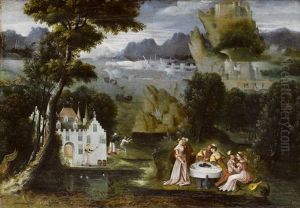Philips Bol Paintings
Philips Bol, also known as Philips Bol or Boll, was a notable figure in the Dutch Golden Age of painting, though not as widely recognized as some of his contemporaries. Born in 1581 in Haarlem, Netherlands, Bol's artistic journey was marked by his detailed landscapes, marine scenes, and historical paintings that reflected the rich cultural and economic environment of 17th-century Holland. His works are characterized by their meticulous attention to detail, vibrant use of color, and the skillful depiction of light, showcasing his mastery in capturing the essence of the Dutch landscape and maritime prowess.
Bol's contribution to the Dutch Golden Age was significant, as he was part of a movement that saw a flourishing of arts and culture in the Netherlands. This period was characterized by a remarkable outpouring of artistic talent, including painters like Rembrandt van Rijn, Johannes Vermeer, and Frans Hals, among others. Bol's work, however, was distinguished by its focus on the natural beauty of the Dutch countryside and its bustling seaports, making him a vital figure in the landscape and maritime genres.
Despite the quality and historical value of his work, Philips Bol did not achieve the same level of fame as some of his peers. Nevertheless, his paintings remain appreciated by art historians and collectors for their contribution to the Dutch Golden Age's rich tapestry of art. Bol's legacy is preserved in various museums and collections in the Netherlands and around the world, where his ability to capture the spirit of his time continues to be celebrated. He passed away in 1661, leaving behind a body of work that continues to intrigue and inspire those who appreciate the depth and beauty of 17th-century Dutch art.



